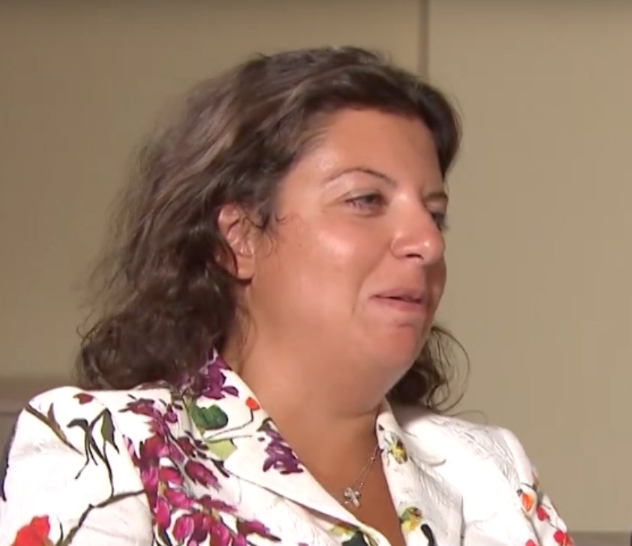Yesterday’s decision by the Kremlin to grant Russian citizenship to residents of the unrecognized Donetsk and Luhansk People’s Republics (DPR and LPR) may seem to have nothing to do with Muslims. However, it is important to understand that the war between Russia and Ukraine, which this decision has brought a step closer, will also affect Muslims in both countries.
Nevertheless, the revelations from the Kremlin’s propaganda channel indicate that they see this decision as a means to counter the “Islamic threat”. It may seem strange to link the Donetsk region, Ukraine, “Bandera” supporters and the “Islamic threat”. But let’s give the floor to the editor-in-chief of Russia Today, Margarita Simonyan, who wrote the following on her Telegram channel (highlighted by us):
“If nothing changes, by 2040 Russia will become a completely different country from a demographic point of view. First of all, Russia will become a Muslim country. This is a medical fact confirmed by numerous calculations. I have nothing against Islam or any other religion. But try to imagine that when your children reach your current age, the president of Russia will be Khabib Nurmagomedov. I have nothing against him either, but personally I would like to preserve my homeland for my children in the cultural, spiritual, social and religious form that I know it – a secular country where many denominations and ethnic groups thrive, because the dominant Russian Orthodox ethnicity allows for the preservation of this delicate status quo”.
These revelations from an official representative of a state channel sound like yet another vivid demonstration that the religious and national equality of Russian citizens, especially the equivalence of Orthodoxy and Islam often discussed by official pro-Islamic figures, is a myth. But what is even more surprising is that the indigenous peoples of Russia and their religion, symbolized in this case by Khabib Nurmagomedov, are portrayed as a threat by a representative of a foreign diaspora or national minority on behalf of the head of the largest state propaganda company.
In this context, let’s recall the basics of international law regarding indigenous peoples and national minorities in order to understand the difference between the two. Indigenous peoples are those who live in a country on their ethnic lands and do not have their own national states or historical homelands beyond its borders. In Russia, which includes their lands (for now), such peoples are indeed the peoples of Dagestan, Chechnya, Tatars, Bashkirs, as well as Yakuts, Chuvash, etc., who are not only indigenous peoples of Russia, but also the titular nations of the republics that make up the Russian Federation (along with territories, regions, autonomous districts, autonomous regions, and federal cities).
The Armenian people, on the other hand, have their own state outside of Russia, so on its territory they are a national minority or diaspora, just like the Chinese, French, English, etc. This raises the question of why, in the opinion of Ms. Simonyan, Russia is her “homeland”, but for Khabib Nurmagomedov, who does not have his own state beyond its borders, this country in which he should be considered a second-class citizen and a potential threat.
If Ms. Simonyan is concerned about the changes in Russia and its national composition, it would be worth starting with how its “showcase” in the form of television is changing, where, judging by the composition of experts, hosts, comedians and directors who do not leave its screens, there is no “Islamization” of Russia, but rather an “Armenization”. It is also worth asking why Ms. Simonyan, who is so concerned about the interests of “Russian Orthodox ethnicity”, is not concerned about its replacement and changing the “delicate status quo” in the “breadbasket” regions of southern Russia?
Here is what open data says about it: “According to the 1989 census, over 182,000 Armenians lived in Krasnodar Krai (34.2% of the total Armenian population of the RSFSR), according to the 2002 census, about 275,000 (24.3% of the total Armenian population of the Russian Federation, 5.4% of the population of the region). The Armenian population makes up 21% in the Tuapse district, 20.2% in the Sochi area, more than 10% of the population are Armenians in the city of Belorechensk, in the Anapa and Apsheronsk districts. Between the censuses of 1989 and 2002 Armenians became the second largest ethno-cultural community in Krasnodar region after Russians (in 1989 Ukrainians were the second largest after Russians). However, according to many unofficial sources, the real number of Armenians in the region is much higher. For example, the figures range from 500,000 to 1 million”.
Thus, in just a few post-Soviet decades, the “delicate status quo” in Southern Russia has changed rapidly, and it has changed, as can be seen, not in favor of Russians, but in favor of Armenians, whose population has increased 5 to 10 times, not to mention their presence in business, “bread” positions, property acquisition, etc. How it has changed in favor of Armenians and not in favor of Islamization in the public space of Russia, where there is a real Armenianization rather than Islamization, as Muslims are not represented in proportion to their numbers, although they are indigenous peoples of the country. However, this change in the demographics and “delicate status quo” of Russia does not concern Ms. Simonyan, which is understandable, since she, her husband, and other members of her ethnic group benefit from these processes. However, she is concerned that the President of Russia could be a representative of her indigenous people, Khabib Nurmagomedov, and that the number of her indigenous people, who belong to the second most practiced religion in Russia, is increasing. This is what the hierarchy of nations looks like in Putin’s Russia, where indigenous Muslim ethnic groups have fewer rights than foreign diasporas.

